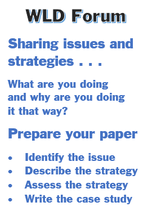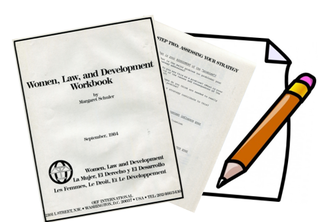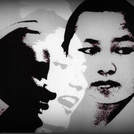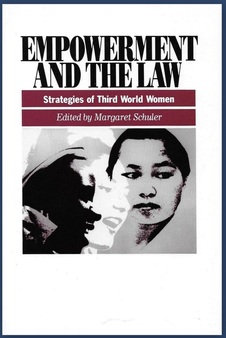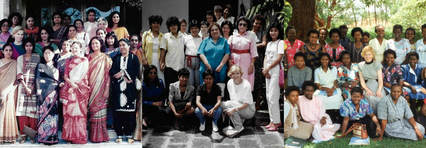The Third World Forum on Women,
Law & Development
Preparation
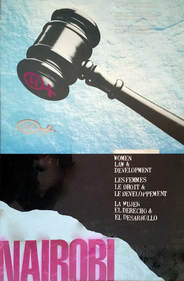
The Central American Legal Services project highlighted the lack of a knowledge base that could have provided theoretical or programmatic guidance about strategies that use the law to advantage women within the context of third world development. There was little documentation about what women were doing in Africa or Asia—or even in South America--and how they saw women’s problems with regard to the law and the strategies employed to address them. Filling this gap led the way to the forum in Nairobi.
The UN plan to hold a World Conference on Women in 1985 about equality, development and peace also envisioned space for non-governmental organizations to explore issues and network among themselves. This contemplated NGO Forum, then, would become our vehicle for promoting an international dialog about women, law and development issues and strategies. In 1983 OEF encouraged me to present a proposal to the Ford Foundation seeking funding to explore the possibilities. In early 1984 with a grant from the foundation, I began a yearlong research and outreach initiative to find and connect with third world women who were using the law in some way to promote or defend women's rights.
Making Connections
Armed with nothing more than a few names and phone numbers, I set out for India as my first stop on a three-month trip across Asia to find activists and practitioners, see their work firsthand and begin a dialog with them. I had spent ten years working in Latin America but I had never been to Asia, so I was looking forward to whole new experience. I was not disappointed. But landing at the airport alone in New Delhi at 2 AM one obscure Thursday in March 1984, I suddenly panicked as I realized that I didn't have a hotel reservation, know where I was going or how to get there. On the other side of the immigration and customs gate I approached the information desk and asked them to help me figure it out. A few minutes later I was on my way to the small hotel where I was to stay in Connaught Circus. I still felt a little apprehensive during the hour-long drive into the city in the dark. The next day I made a telephone call to an Indian woman I had met in Washington a few months earlier, hoping she would remember me. She answered immediately and I was off to the races! One contact led to another and that to still more. My two weeks there were filled with dynamic meetings and exciting conversations as people told about their work. The scary rides in auto rickshaws careening around busses and through gnarled traffic separating my numerous appointments only fed my sense of adventure.
The time in New Delhi came quickly to an end and before I knew it I was off for to Sri Lanka, Nepal, Thailand, Indonesia and the Philippines, each one with its own surprises, dynamism and challenges. Arriving without secure hotel accommodations became "old hat." Nothing to it. Things always worked out due to the generosity of the people I met along the way. Most of the women I met were with non-governmental organizations supported by foundations, churches and mosques, political parties, and in some cases government. In some countries making contact was difficult; in others, organizations made it easy for me by quickly convening large gatherings to talk about women, law and development and introduce the idea of setting up an interregional forum to share ideas and experiences, to learn from one another and establish new relationships.
The Asian trip was followed by outreach to the South American countries of Colombia, Ecuador, Peru, Bolivia, Chile and Argentina followed by the same in Ghana, Nigeria, Kenya, Botswana, Zimbabwe and Tanzania in Africa. The process and results were similar. The list of contacts grew and my understanding of their efforts did too.
The UN plan to hold a World Conference on Women in 1985 about equality, development and peace also envisioned space for non-governmental organizations to explore issues and network among themselves. This contemplated NGO Forum, then, would become our vehicle for promoting an international dialog about women, law and development issues and strategies. In 1983 OEF encouraged me to present a proposal to the Ford Foundation seeking funding to explore the possibilities. In early 1984 with a grant from the foundation, I began a yearlong research and outreach initiative to find and connect with third world women who were using the law in some way to promote or defend women's rights.
Making Connections
Armed with nothing more than a few names and phone numbers, I set out for India as my first stop on a three-month trip across Asia to find activists and practitioners, see their work firsthand and begin a dialog with them. I had spent ten years working in Latin America but I had never been to Asia, so I was looking forward to whole new experience. I was not disappointed. But landing at the airport alone in New Delhi at 2 AM one obscure Thursday in March 1984, I suddenly panicked as I realized that I didn't have a hotel reservation, know where I was going or how to get there. On the other side of the immigration and customs gate I approached the information desk and asked them to help me figure it out. A few minutes later I was on my way to the small hotel where I was to stay in Connaught Circus. I still felt a little apprehensive during the hour-long drive into the city in the dark. The next day I made a telephone call to an Indian woman I had met in Washington a few months earlier, hoping she would remember me. She answered immediately and I was off to the races! One contact led to another and that to still more. My two weeks there were filled with dynamic meetings and exciting conversations as people told about their work. The scary rides in auto rickshaws careening around busses and through gnarled traffic separating my numerous appointments only fed my sense of adventure.
The time in New Delhi came quickly to an end and before I knew it I was off for to Sri Lanka, Nepal, Thailand, Indonesia and the Philippines, each one with its own surprises, dynamism and challenges. Arriving without secure hotel accommodations became "old hat." Nothing to it. Things always worked out due to the generosity of the people I met along the way. Most of the women I met were with non-governmental organizations supported by foundations, churches and mosques, political parties, and in some cases government. In some countries making contact was difficult; in others, organizations made it easy for me by quickly convening large gatherings to talk about women, law and development and introduce the idea of setting up an interregional forum to share ideas and experiences, to learn from one another and establish new relationships.
The Asian trip was followed by outreach to the South American countries of Colombia, Ecuador, Peru, Bolivia, Chile and Argentina followed by the same in Ghana, Nigeria, Kenya, Botswana, Zimbabwe and Tanzania in Africa. The process and results were similar. The list of contacts grew and my understanding of their efforts did too.


